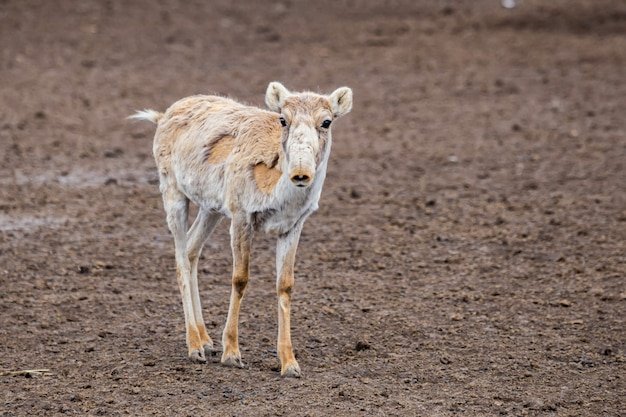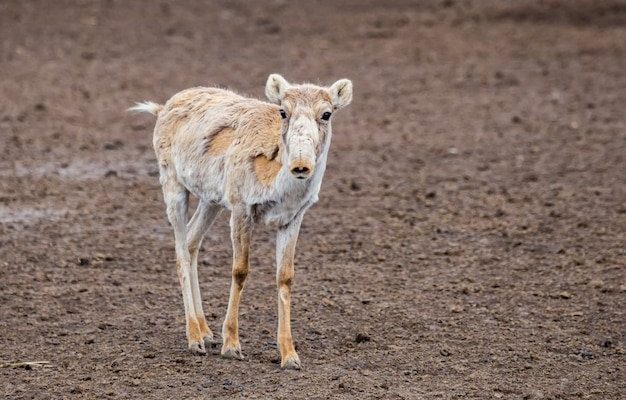
The Saiga antelope, native to the steppes of Central Asia, has a fascinating story that spans millions of years. Imagine this animal as a time traveler, witnessing climate changes, habitat shifts, and even the hand of humans shaping its destiny. Understanding the Saiga’s evolutionary history not only helps us appreciate its quirks but also highlights the importance of conservation efforts to protect these unique creatures.
Origins and Ancestry
The evolutionary journey of the Saiga antelope begins over 6 million years ago. Researchers trace its ancestry back to the genus Saiga, which shares roots with various species of wild goat and other antelopes. The Saiga’s closest relatives can be found in the genus Antilocapra, with the pronghorn antelope being a notable example. Interestingly, the Saiga’s unique features are adaptations to survive in their harsh environments, primarily the arid steppes of Eurasia.
The Saiga’s ancestors roamed vast grasslands during the Pleistocene epoch, a time characterized by fluctuating climates and mega fauna. Picture mammoths, saber-toothed cats, and giant ground sloths. The Saiga adapted well to these conditions, developing a robust body, long legs, and that distinctive snout, which helps filter dust and regulate temperature. It’s a cool example of how animals evolve traits that help them thrive in their environment, almost like nature’s own design workshop.
Unique Adaptations
Let’s talk about that nose! The Saiga’s large, tubular snout is not just for looks—it serves several vital functions. Most importantly, it helps the antelope breathe in the dusty winds of its habitat, filtering out dirt and warming the cold air before it reaches the lungs. Imagine trying to run a marathon while inhaling cold air; that snout turns a tough situation into a manageable one.
In addition to its nose, the Saiga has developed several other adaptations. Its long legs allow for speedy escapes from predators like wolves and snow leopards, while its slender body helps conserve energy. These features are essential for surviving in environments where food can sometimes be scarce. Here’s the thing: these adaptations aren’t just quirks; they are survival mechanisms that have been honed through natural selection over countless generations.
The Saiga’s Habitat and Range
The Saiga antelope primarily inhabits the steppes and semi-deserts of Kazakhstan, Mongolia, and parts of Russia. These regions provide the open spaces and grazing opportunities the Saiga needs to thrive. Unfortunately, over the years, human activities such as agriculture, urban development, and poaching have drastically reduced its habitat.
Interestingly, the Saiga is a migratory species. You might envision herds gracefully moving across the landscape in search of greener pastures. In spring and summer, they follow the growth of vegetation, while during winter, they migrate to more sheltered areas. This nomadic lifestyle is crucial for their survival, as it helps them adapt to seasonal changes in food availability. However, with less space to roam due to human encroachment, these migrations have become increasingly challenging.
Population Decline and Conservation Efforts
Despite its unique adaptations and resilience, the Saiga antelope faces significant threats. Over the past few decades, their population has plummeted—by as much as 95% in some areas. Major factors include poaching for their horns, which are prized in traditional medicine, and habitat destruction due to farming and industrial activities.
Conservation organizations are stepping in to help. Programs aimed at protecting the Saiga’s habitat, along with anti-poaching initiatives, are crucial. For instance, creating protected reserves allows these animals to thrive without the constant threat of human activities. It’s like giving them their own safe space to do their thing without worrying about predators—except in this case, the predators are us.
Success Stories
Some conservation efforts have shown promise. In Kazakhstan, a significant increase in Saiga populations has been noted after strict anti-poaching measures were put in place. These success stories remind us that with focused action, it’s possible to turn the tide for species on the brink of extinction.
This brings attention to the larger conversation about biodiversity and the role every species plays in maintaining ecological balance. The Saiga, while often overlooked, serves as a crucial reminder that every creature contributes to the health of our planet.
The Saiga in Culture and Mythology
Interestingly, the Saiga antelope has made its mark in cultures across Central Asia. To some, it symbolizes resilience and endurance. Folklore often features the Saiga as a creature of the steppe, embodying the spirit of the land. Stories passed down through generations highlight the antelope’s graceful movements and adaptability to challenges, reflecting the values of the people who share its habitat.
These cultural connections offer a deeper understanding of the Saiga’s significance beyond its biological existence. If you’re ever in the region, local festivals celebrating the Saiga remind us of the beauty and importance of wildlife in our lives. It’s like a festival for nature—tapping into the rich heritage that binds communities with their natural surroundings.
The evolutionary history of the Saiga antelope showcases a remarkable tale of adaptation, resilience, and, unfortunately, vulnerability. From its unique adaptations to survive in harsh climates to the ongoing challenges it faces due to human actions, the Saiga is a symbol of the delicate balance of nature.
To truly appreciate the Saiga and its place in our world, it’s essential to connect its story with our own. As we move forward, protecting species like the Saiga antelope becomes not just a conservation effort but a personal responsibility. Every small action counts—whether it’s supporting conservation initiatives, spreading awareness, or simply appreciating the beauty of wildlife around us.
So, the next time you think about antelopes, remember the Saiga and its incredible journey through time. It’s not just an animal; it’s a testament to survival and the ongoing story of life on Earth. Let’s ensure that this story continues for generations to come.

